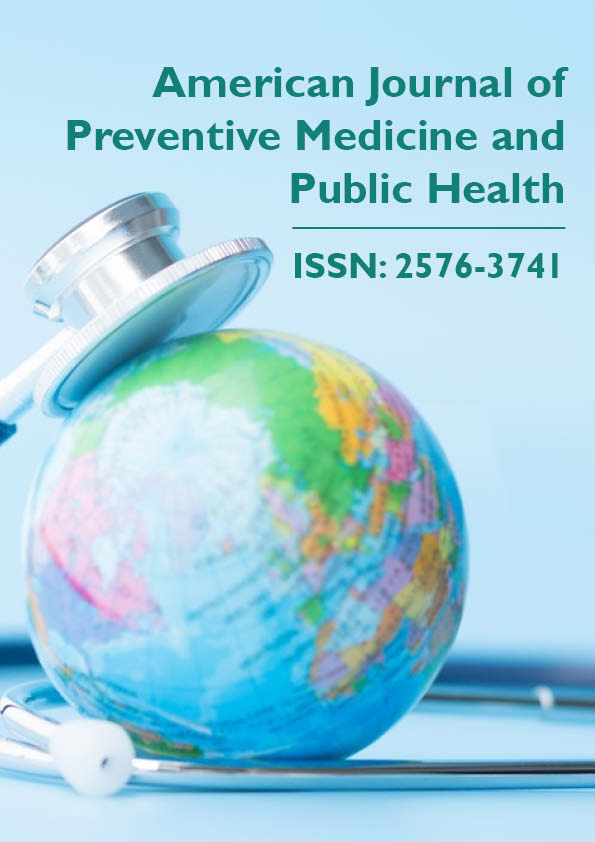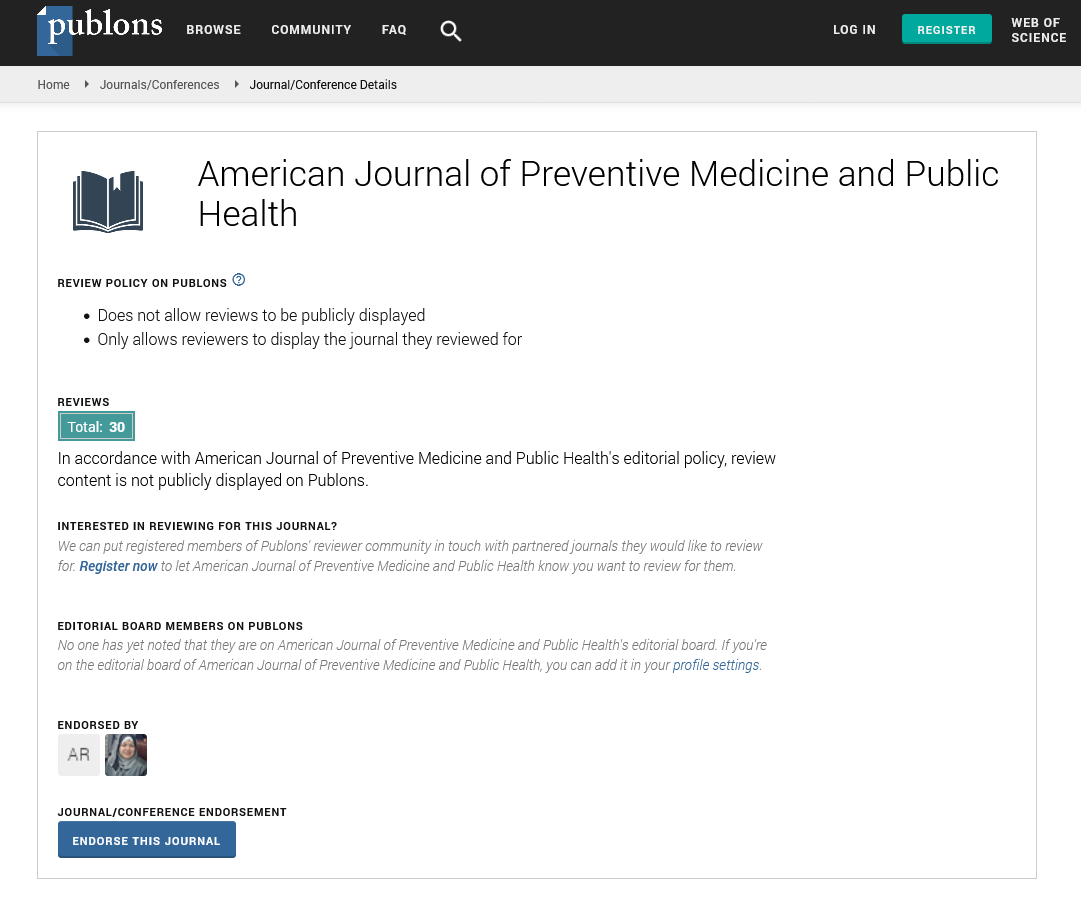Opinion - American Journal of Preventive Medicine and Public Health (2022)
A Note on Medical and Global Health Issues
Monika Laszkowska*Monika Laszkowska, Department of Public Health, Daffodil International University, Dhaka, Bangladesh, Email: Laszkowm28@mskcc.cpm
Received: 06-Sep-2022, Manuscript No. AJPMPH-22-77006; Editor assigned: 08-Sep-2022, Pre QC No. AJPMPH-22-77006 (PQ); Reviewed: 22-Sep-2022, QC No. AJPMPH-22-77006; Revised: 30-Sep-2022, Manuscript No. AJPMPH-22-77006 (R); Published: 07-Oct-2022
Description
The welfare of populations in a global context is referred to as global health, which is defined as “the area of study, research, and practice that places a premium on improving health and achieving equity in health for all people worldwide.” There is frequently an emphasis on issues that cut across national boundaries or have a global political and economic influence. Global health thus focuses on improving overall health (including mental health), minimizing inequities, and defending against external threats that transcend national boundaries. International health, which is the area of public health that focuses on poor countries and developed countries’ efforts to provide aid abroad, should not be confused with global health. The prevalence of major global diseases around the world and the threat they pose to current life expectancy can be used to gauge global health. According to estimates, the average life expectancy in a pre-modern, underdeveloped world was about 30 years.
Health topics
Diarrheal illnesses: 17% of deaths in children under the age of five are due to diarrhoea, the second most common cause of child mortality in the globe. Bacteria and viruses can spread more easily through water, food, utensils, hands, and flies when there is poor sanitation. Oral rehydration therapy can effectively cure dehydration brought on by diarrhoea, dramatically lowering mortality. The promotion of breastfeeding and the use of zinc supplements are important dietary interventions. While rotavirus diarrhoea can be prevented by a safe and potentially affordable vaccine, hygiene practices alone may not be adequate to prevent it.
Malaria: The parasites of the genus Plasmodium are the source of the infectious disease malaria, which is spread by mosquitoes. Fever, headaches, chills, muscle aches, and nausea are possible symptoms. There are over 500 million cases of malaria each year, mostly affecting children and expectant mothers in developing nations. A disproportionately large amount of the worldwide malaria burden is placed on the WHO African Region. 90% of malaria infections and 91% of malaria deaths occurred in the area in 2016. Cost-effective measures to reduce malaria fatalities include the use of insecticide-treated bed nets and rapid artemisinin- based combination therapy supported by intermittent prenatal medication. International visitors to areas where malaria is endemic are encouraged to take antimalarial medications such atovaquone-proguanil, doxycycline, or mefloquine as chemoprophylaxis. International trade and global consumption of goods linked to deforestation may potentially have an indirect impact on malaria risk. Deforestation is a common result of primary commodities, and deforestation can worsen malaria transmission. Consumption of such goods in rich countries may raise the risk of malaria in underdeveloped countries.
Maternal health: Among women of reproductive age, complications during pregnancy and childbirth are the most common causes of death. A woman passes away from childbirth-related problems every minute or so in many underdeveloped nations. Poor maternal health, behind HIV/AIDS, malaria, and tuberculosis, is the fourth most common cause of mortality for women globally, according to the World Health Organization’s 2005 World Health Report. The majority of maternal deaths and injuries are preventable, and in the industrialized world, these tragedies have mostly been eliminated. In order to achieve the goals for improving maternal health, more deliveries should be helped along by trained birth attendants. 68 low-income nations are being monitored by a joint effort between WHO and UNICEF. According to estimates, 97% of maternal and infant deaths globally will occur between now and 2015.
Copyright: © 2022 The Authors. This is an open access article under the terms of the Creative Commons Attribution NonCommercial ShareAlike 4.0 (https://creativecommons.org/licenses/by-nc-sa/4.0/). This is an open access article distributed under the terms of the Creative Commons Attribution License, which permits unrestricted use, distribution, and reproduction in any medium, provided the original work is properly cited.







